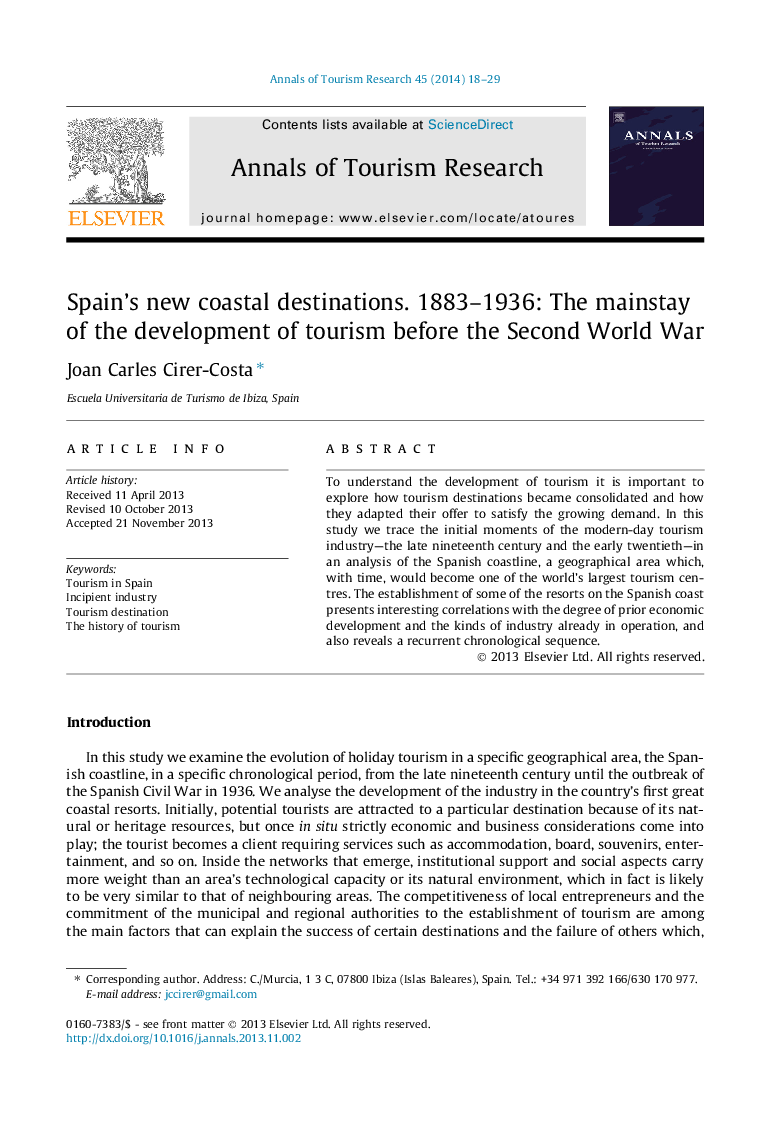| Article ID | Journal | Published Year | Pages | File Type |
|---|---|---|---|---|
| 1007068 | Annals of Tourism Research | 2014 | 12 Pages |
To understand the development of tourism it is important to explore how tourism destinations became consolidated and how they adapted their offer to satisfy the growing demand. In this study we trace the initial moments of the modern-day tourism industry—the late nineteenth century and the early twentieth—in an analysis of the Spanish coastline, a geographical area which, with time, would become one of the world’s largest tourism centres. The establishment of some of the resorts on the Spanish coast presents interesting correlations with the degree of prior economic development and the kinds of industry already in operation, and also reveals a recurrent chronological sequence.
•The industrial era created its own tourism model.•Tourist destinations require specific conditions in order to develop.•Tourism is a business activity that is closely linked to commercial models, not to industrial models.
